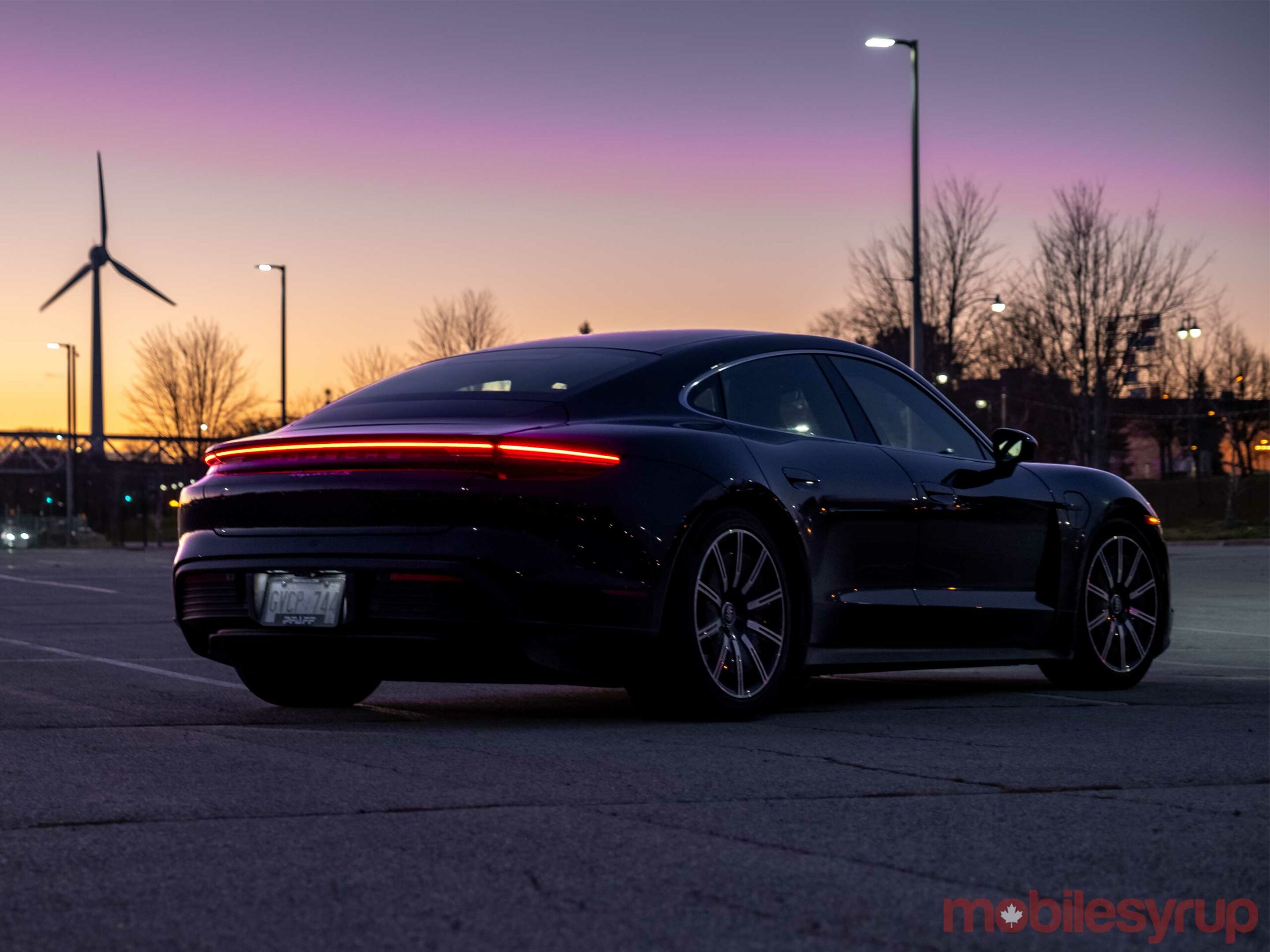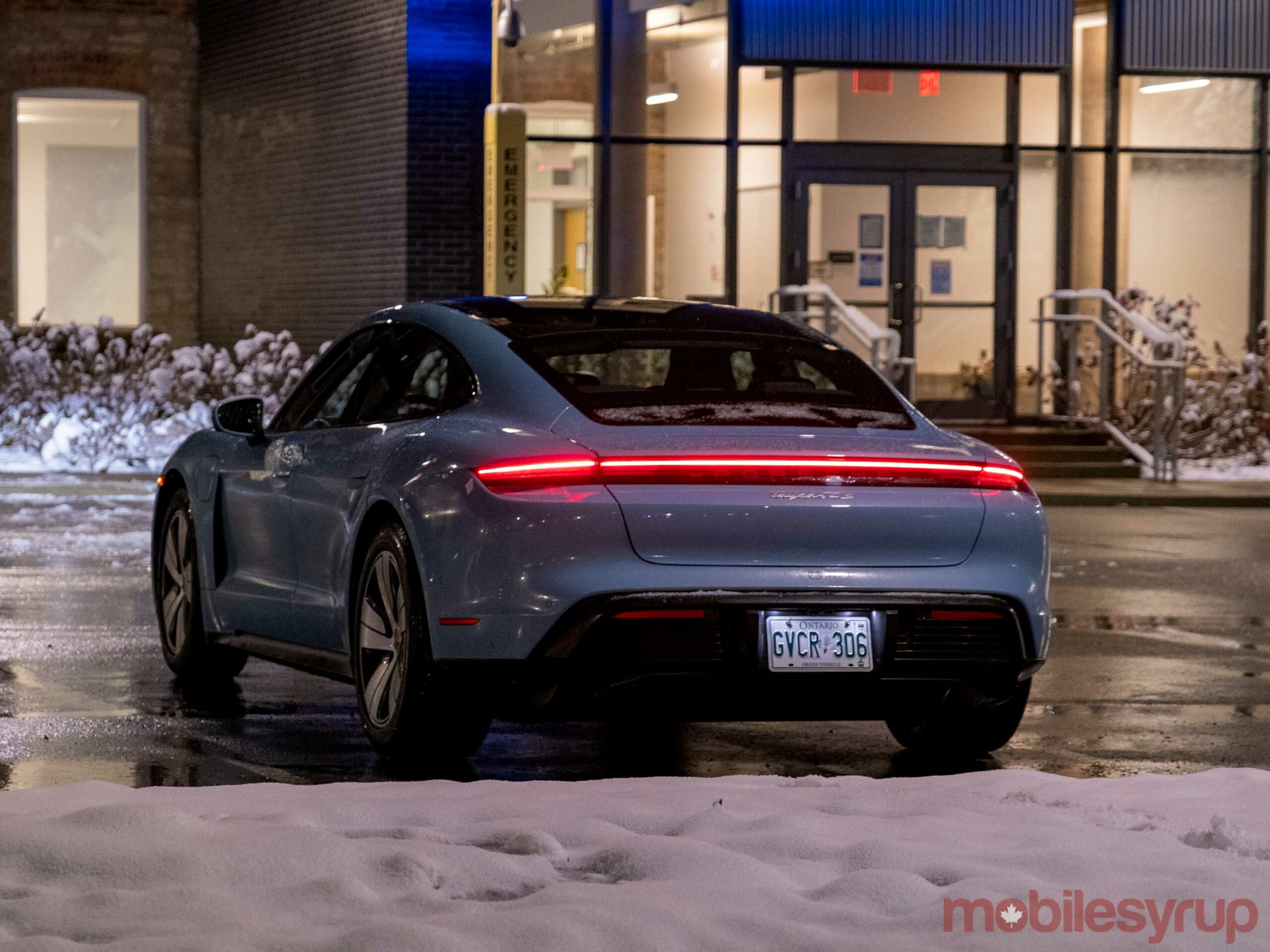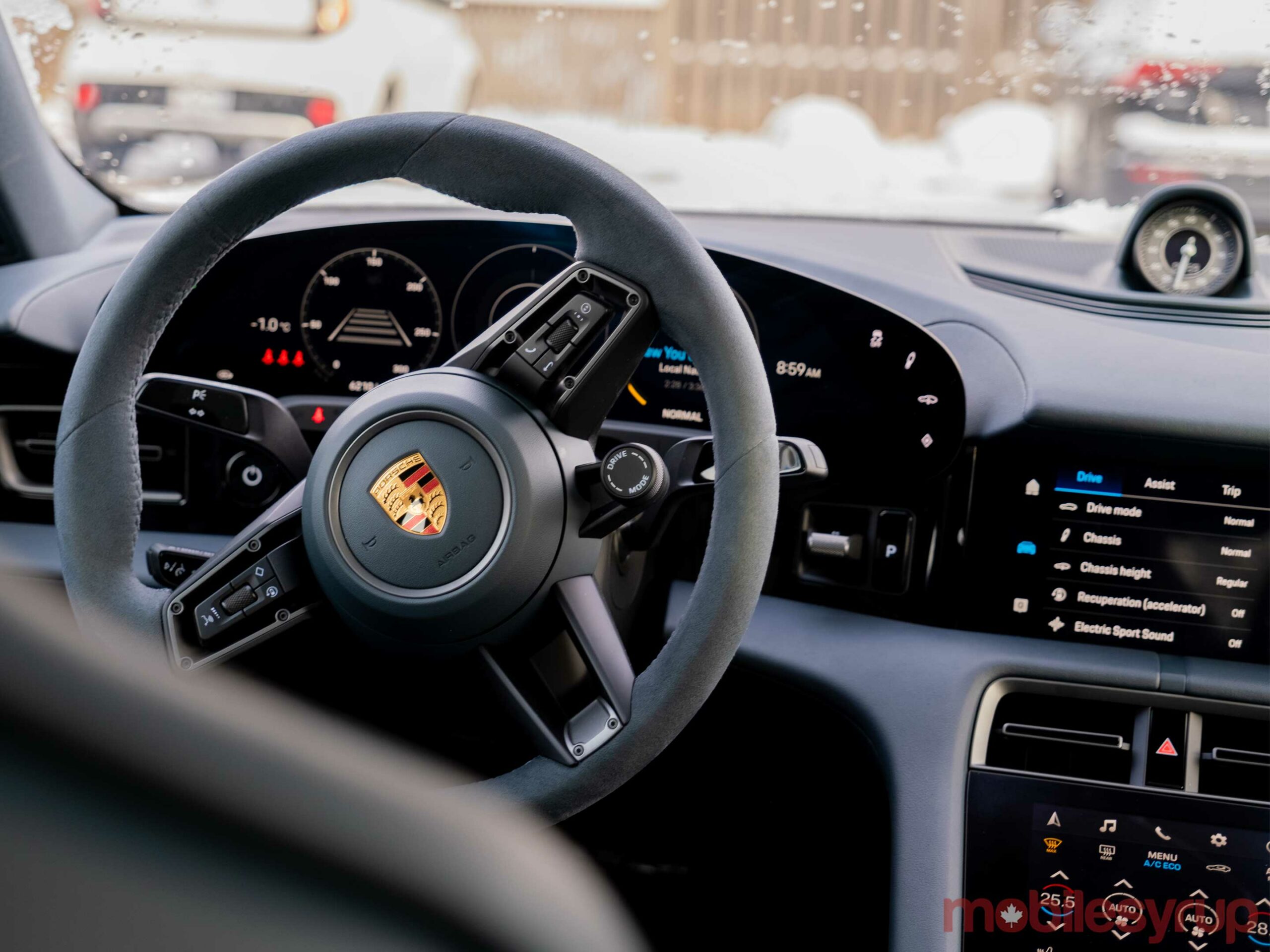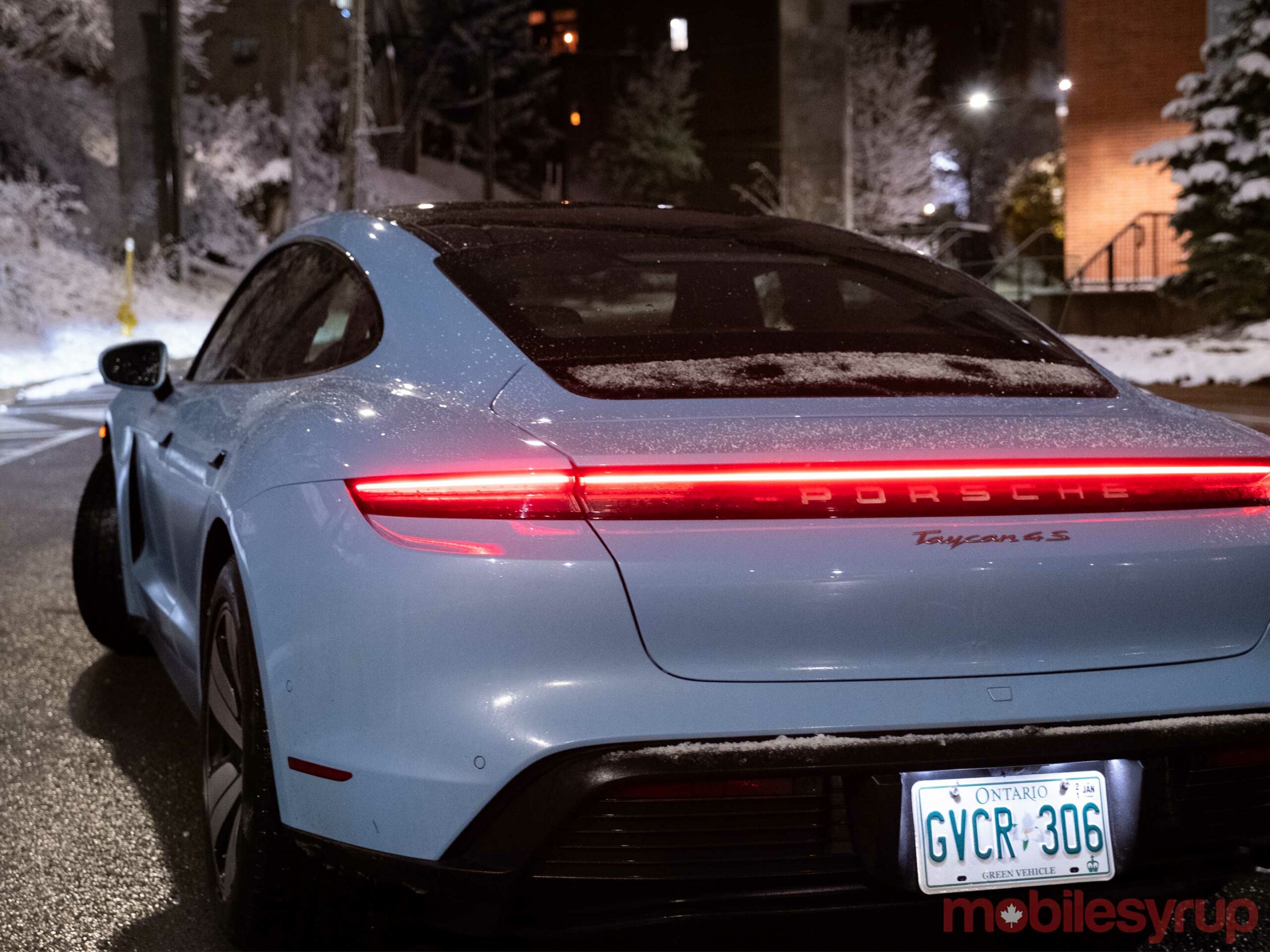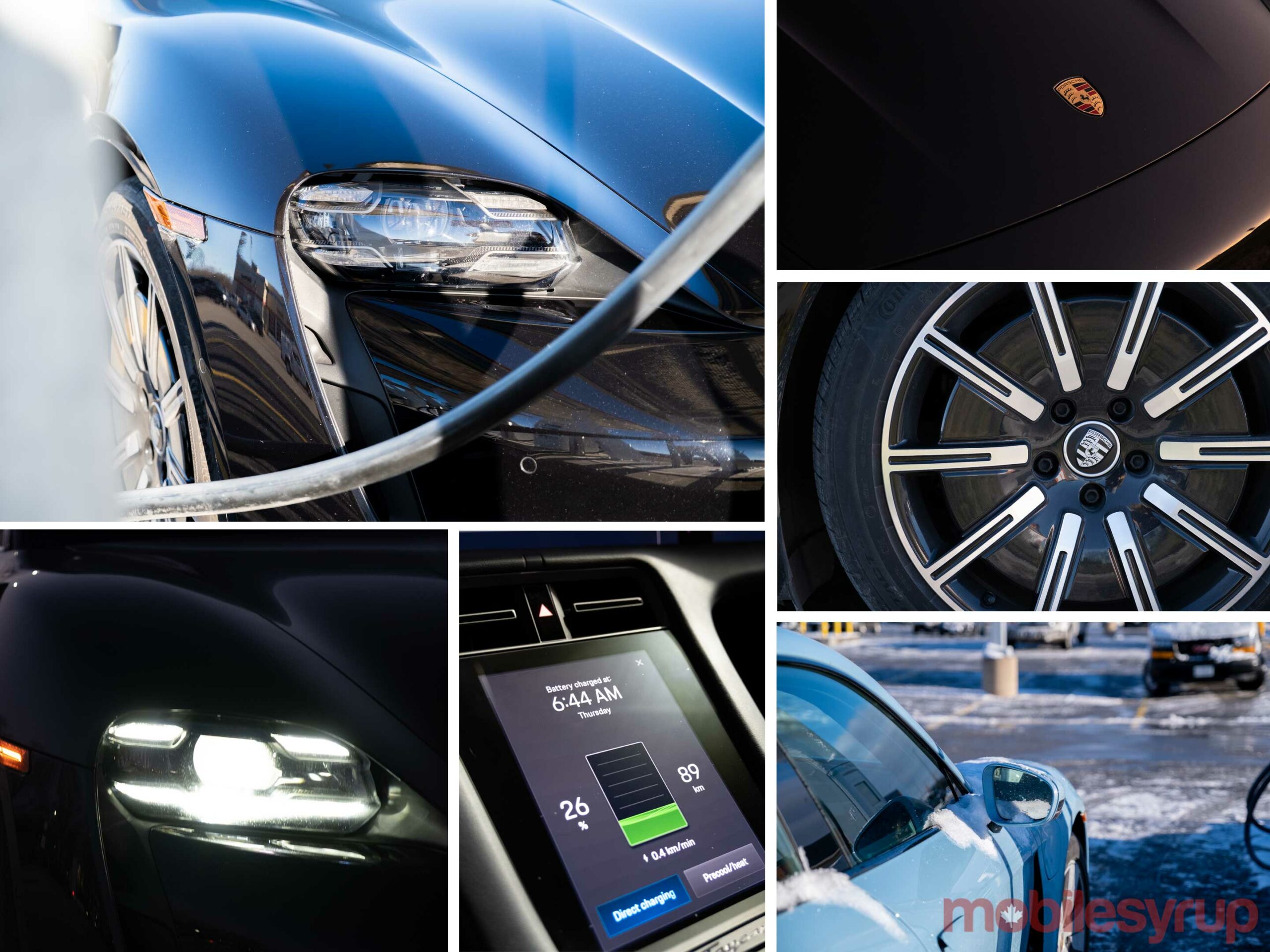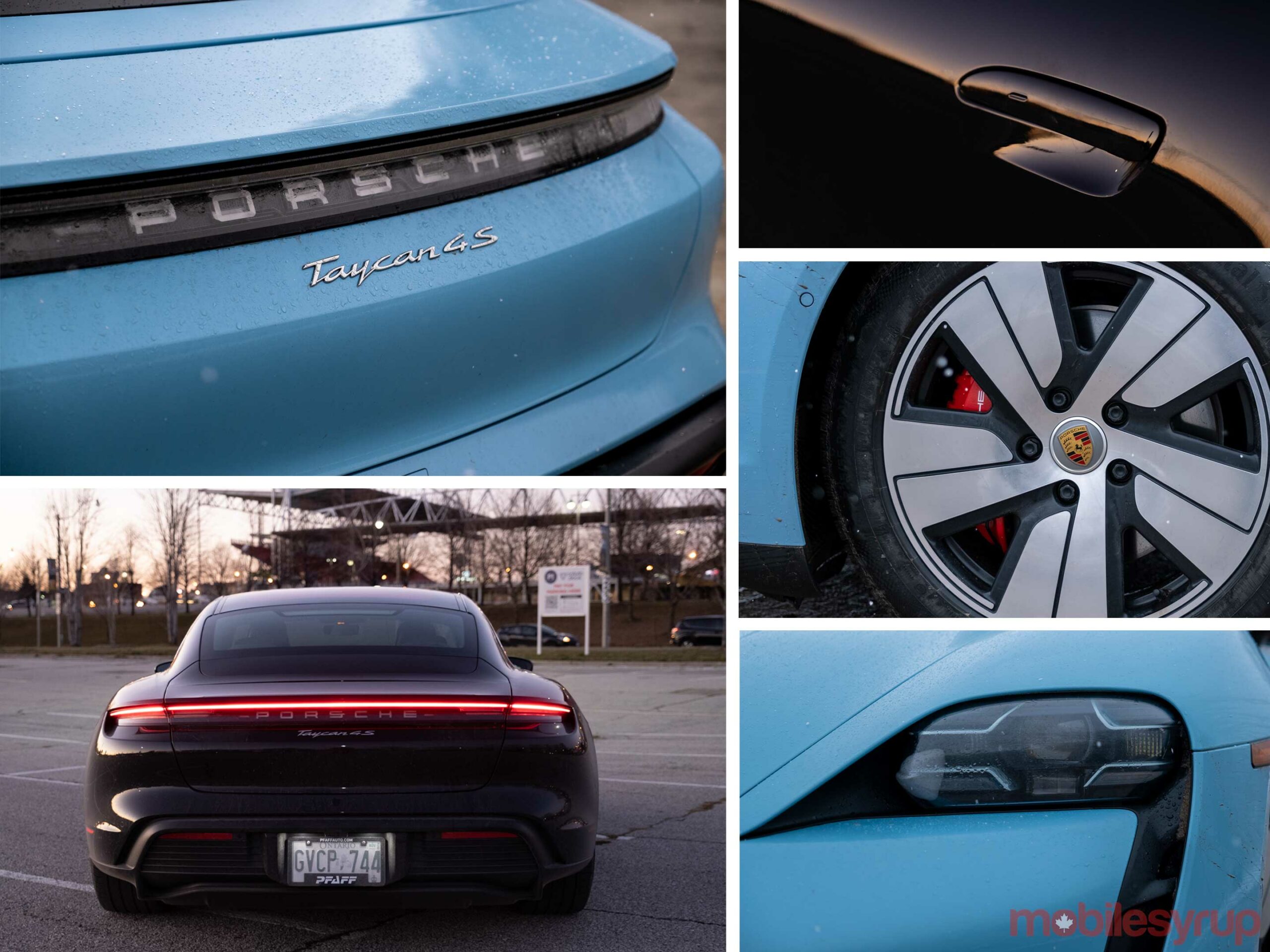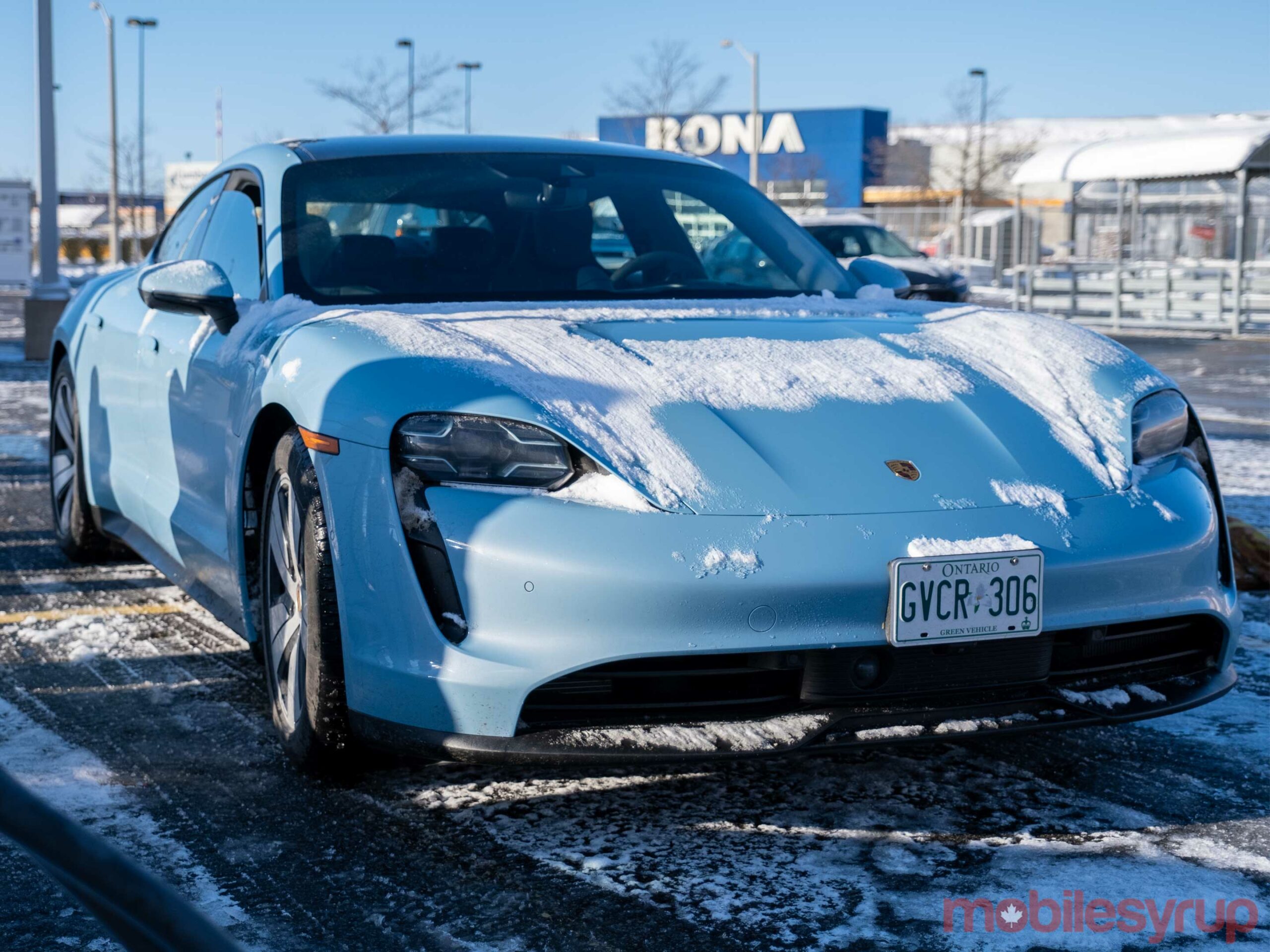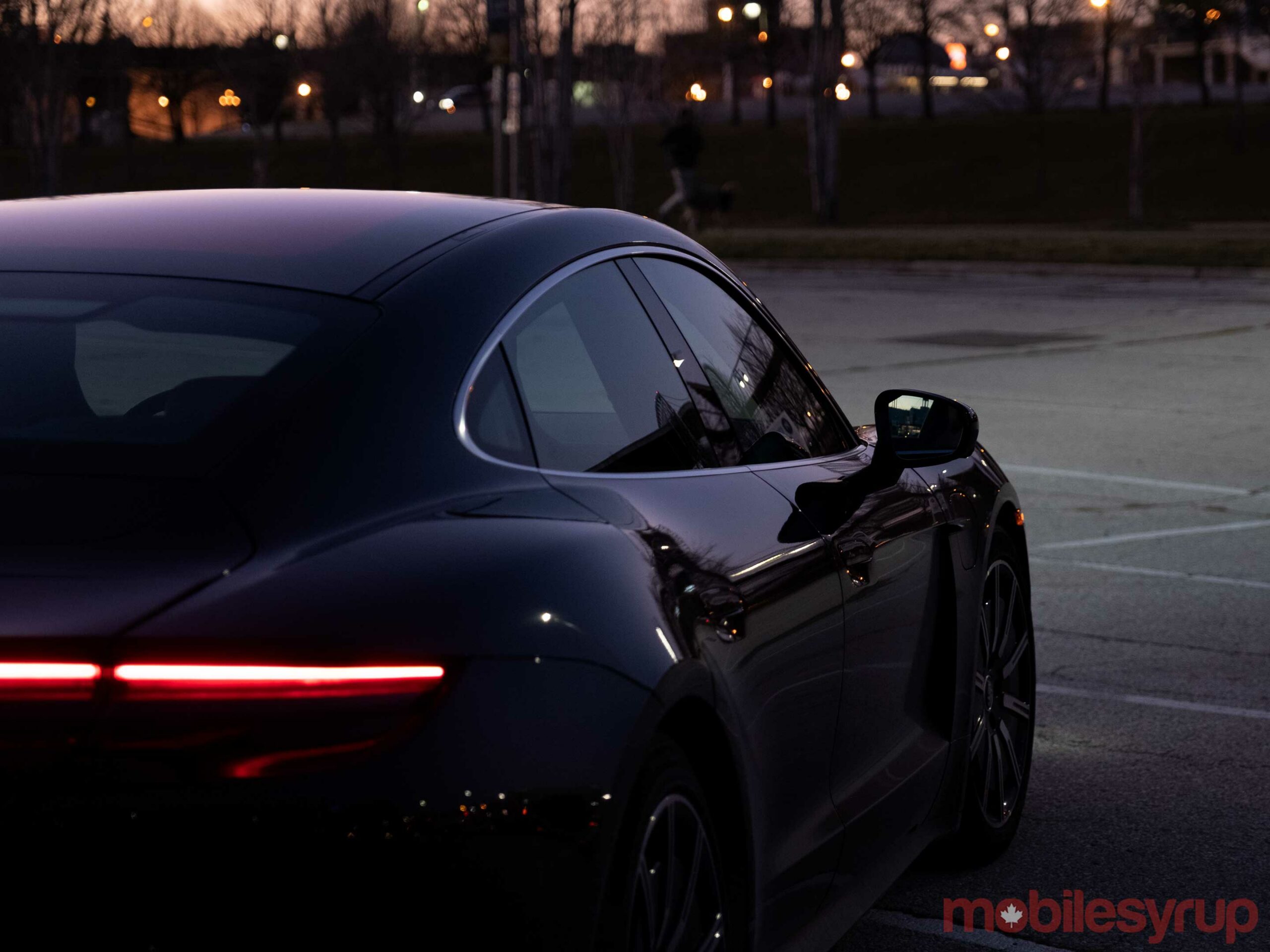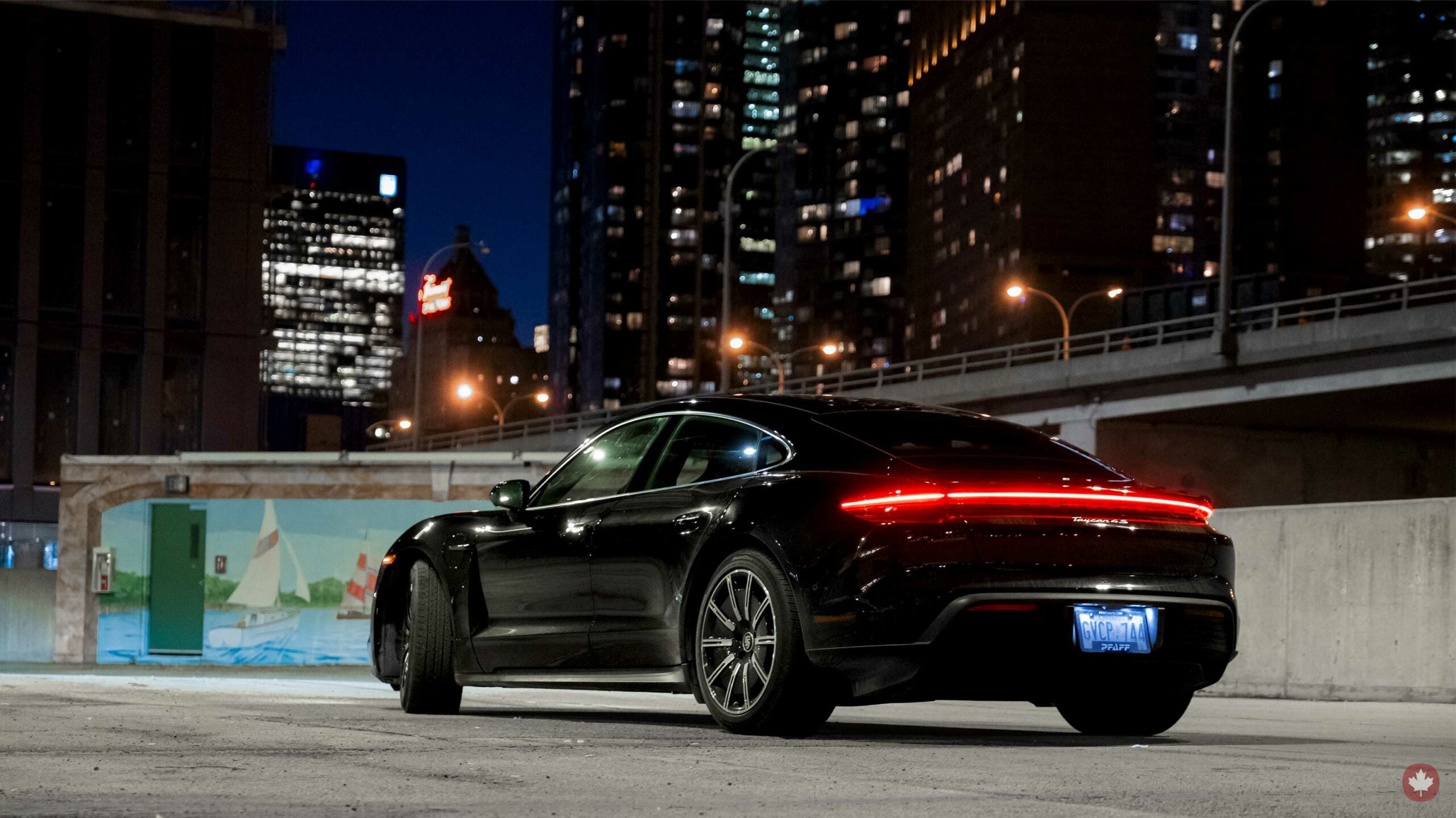
Electric cars are the future, that much is clear.
Governments have started implementing electric vehicle (EV) laws, most major automakers are pivoting to electric and many consumers are eyeing these cars with a lot of intrigue.
I spent five days earlier this December learning about what it’s like to go all-electric with the Porshe Taycan, and I can say that while the world might not be quite ready for EVs, Porsche has proved that electric vehicles are prepared for the world.
It’s hard to choose what to focus on since all aspects of the Taycan are so appealing, but since the driving was a lot more fun than I expected, I’ll start with that.
It’s worth mentioning that the 2020 Porshe Taycan starts at $120,000 in Canada, making it more than a little out of most people’s budgets, but that said, a lot about how the car operates as an EV can be applied to other electric vehicles.
Did Porsche build the batmobile?
I drove two versions of the Taycan, and both felt very different in some ways because of their colour. The flashier ‘Frozen Blue Metallic’ felt like a very high-end sports car, as people moved out of its way on the highway and stared as I drove by. The ‘Black’ version, on the other hand, was a lot more stealthy and at times felt like a pared-down version of the Batmobile.
The main difference between the two vehicles was an extra infotainment display in front of the passenger seat and additional driver assistance features in the Blue model.
Functionally, both EVs performed the same on the road with an insane amount of nearly-instant torque that makes taking off from a complete stop incredibly exhilarating. I like to think of myself as a pretty regular driver, but once I got behind the wheel of the Taycan, I could barely contain myself from flooring it nearly every time I took off to get that hit of G-force as the car launches into space.
That’s the most fun thing about the Taycan, and to an extent, all electric cars. The ability to go from being stopped to 100km in just three seconds is a wild feeling that’s very unique to electric vehicles. Everyone I showed the Taycan to, including the skeptics, were blown away by how fun it is to have this much acceleration-power at your fingertips.
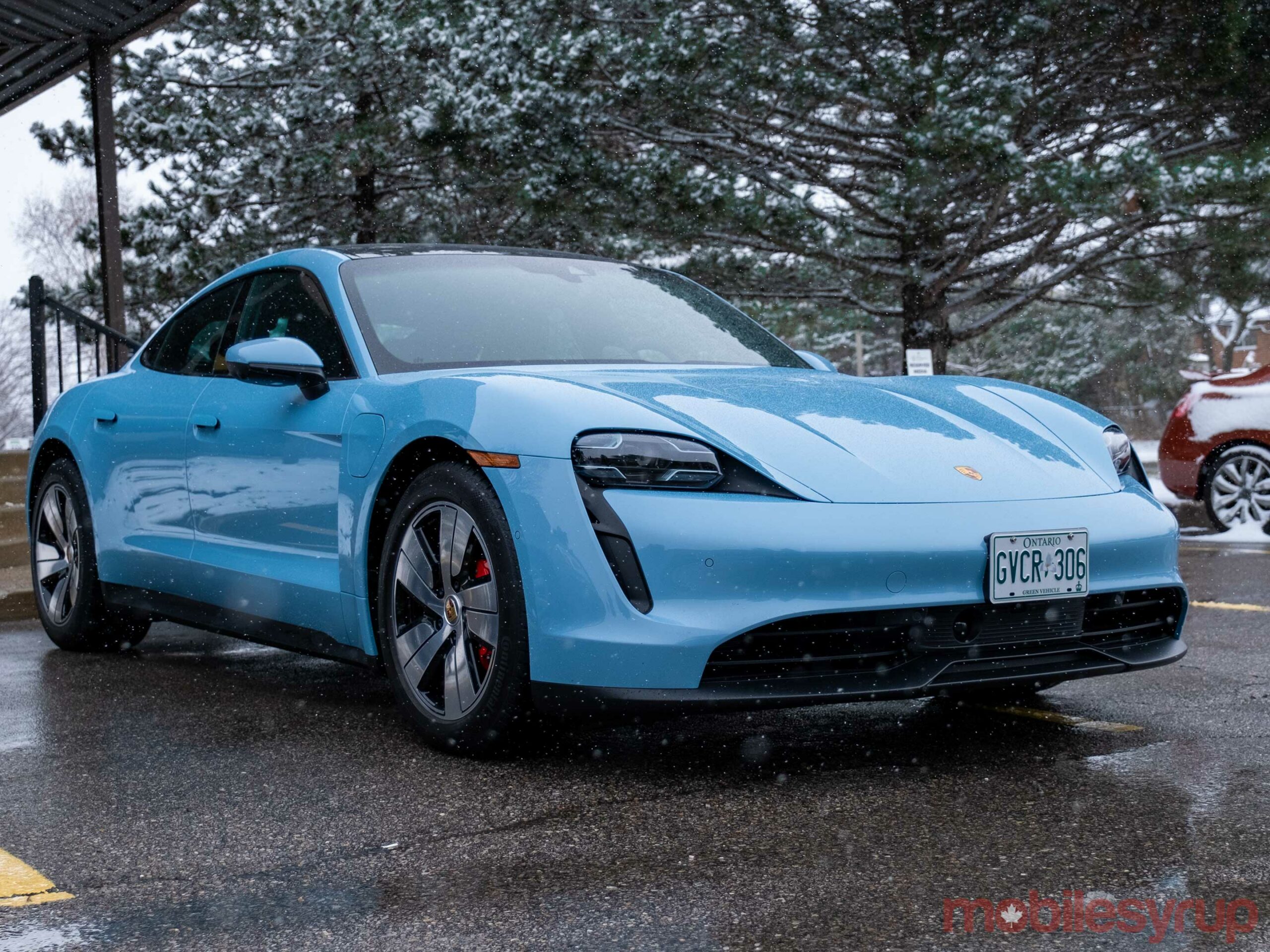
That doesn’t even cover what it’s like to unleash this thing and push it to highway speeds. That said its max speed is 250km/h. This car even has a two-speed transmission, an oddity in EVs, that helps accelerate even further when you’re already rocketing at highway speeds. You can even hear the car change gears when you accelerate, giving it a classic gear-change feeling. Even at fast highway speeds, the car still felt in control and incredibly smooth.
To further increase this classic car feeling, Porsche also offers an electric sport sound. This sound is an expensive $580 add-on, but I’d argue that it’s absolutely worth it. This upgrade needs to be enabled in the car’s settings, or it comes on automatically when you drop into ‘’Sport Plus’ mode. It makes the Taycan sound like a Podracer from Star Wars Episode I: The Phantom Menace. It purs to life and even has a really catchy deceleration sound. There’s something to be said about driving around in silence, but when you have this much power under your seat, the sound adds a lot to the experience.
What Porsche has built here is a very capable sports car that also captures the futuristic essence of an EV in a captivating package. The interior design, sound and the fact that it’s electric all lend themselves perfectly to this concept.
I can say as a fact, this car has ruined my Jetta for me. It’s tough to put the driving experience into words since, at its core, it’s still two pedals and a wheel, so it operates much like a traditional vehicle. That said, there’s something incredible about being behind the wheel of an electrified vehicle that can smoke almost any vehicle on the road. I even had trouble finding music that felt appropriately futuristic to play in the Taycan because it feels so ahead of its time.
On a pure driving level, the handling is perfectly responsive, and the shocks feel very sporty. In a lot of instances, it feels like the car is gliding, as opposed to driving. The low ride feels as premium as this car’s price tag suggests, and the way it handles the bumps of the road feels sporty without being overbearing, which is a fun balance to drive. Even something as simple as lane changing felt smooth as the car floats along the highway.
The breaks are also a highlight and put regular consumer-level brakes to shame with how easy they make it to slow down when you’re driving fast. Other EV trademarks like the low centre of gravity are present in the Taycan, making it feel incredibly nimble.
Step inside the spaceship
Once you get the incredibly adjustable Taycan seat in place, you find yourself surrounded by large screens full of information.
There’s a sizable 16.8-inch module behind the wheel that replaces a classic instrument cluster. This is my favourite screen in the car and offered the best colour reproduction. The other two displays aren’t bad, but the punchy colours and deep blacks on the instrument screen were pleasing to look at even in direct sunlight.
There are two middle displays that are both slightly different but offer a clean experience and are much higher resolution than many consumer-level car infotainment displays.
The middle screen is home to most of the car’s functions. That means the radio, navigation, CarPlay, phone, settings and other infotainment staples are all here. There’s also a pretty robust backup camera system that offers nine different points of view.
On the music side, Porsche has partnered with Apple Music to natively stream music from your account via the car’s internet connection even if your phone isn’t in the car. Of course, you can use Bluetooth or the radio, but Android and Spotify users are unable to take advantage of some of the infotainment’s cooler features.
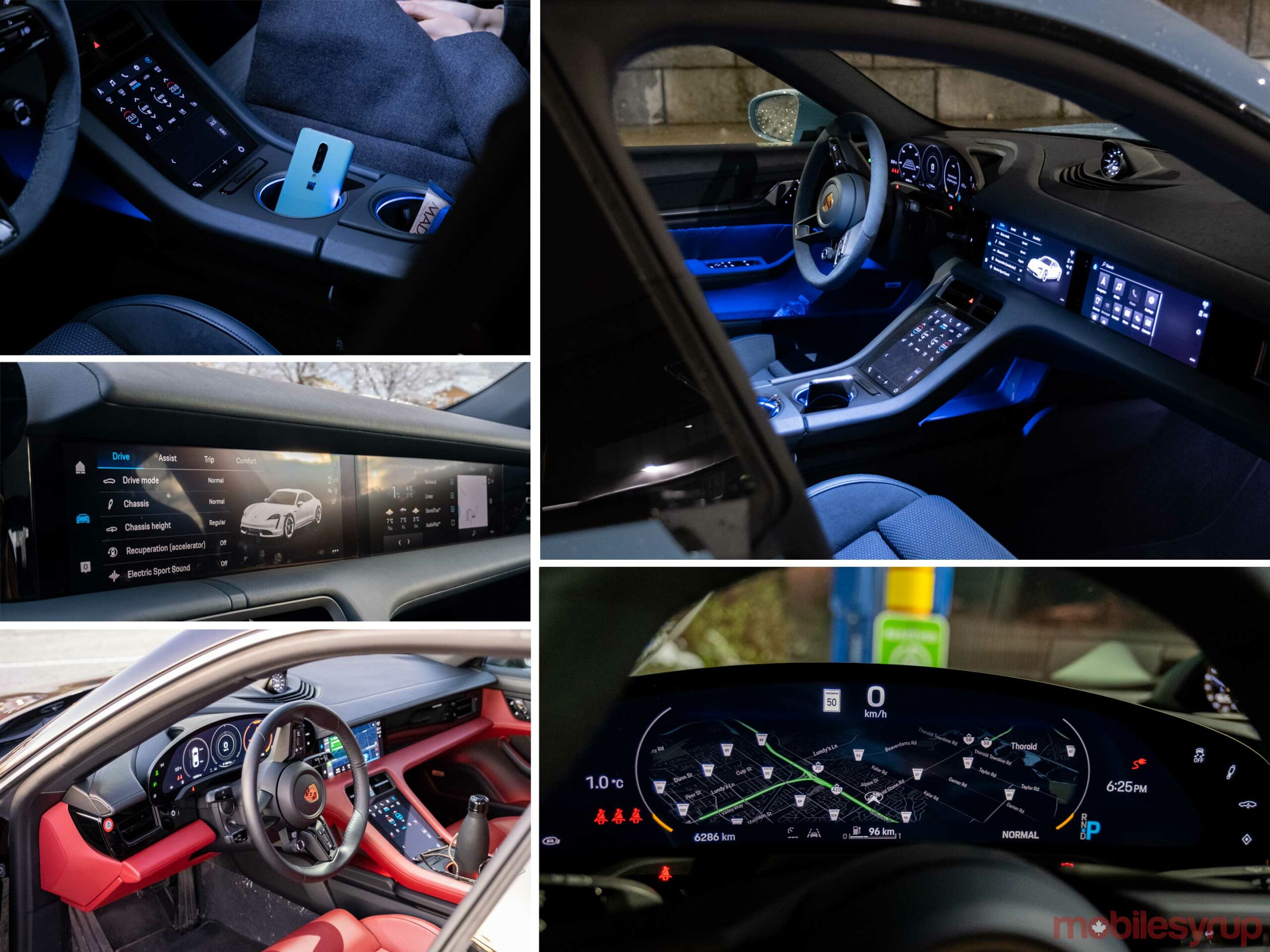
I drive around and almost exclusively use either CarPlay or Android Auto, and if I was an Android owner who wanted this car I’d be disappointed that Porsche didn’t opt to support both systems. For example, even my basic 2017 Jetta Trendline+ supports both platforms.
When it comes to touching the screens, I found the top screen a bit more responsive, but I liked the lower screen’s vibrating feedback more. Honestly, both displays were fine once you used them, but neither feels as responsive as touching a phone screen. They also responded well even when I was wearing driving gloves, which was a nice touch. There’s a small learning curve as you get used to everything, but since there are so many screens in the car, pretty much everything that is a button or a dial in a regular car has a persistent place on a screen.
The only dial I did miss was the volume control, which was less than desirably placed on the bottom touchpad’s bottom edge. The dial on the steering wheel’s left side was a bit better at cranking the volume, but I still would have loved a dial shoved somewhere.
There’s an optional fourth screen placed in front of the passenger, but this only duplicates some features of the centre display and isn’t worth it.
Overall, the experience in the car is top-notch. When you power the vehicle off, the seat retracts into the car and the steering wheel lifts to give the driver more room to get out. When you get in the car, the seat pulls forward and the wheel resets to your previous position. This isn’t specific to electric cars, but it makes riding in this car feel super-premium. Beyond the useless second screen and the lack of android Auto support, the inside of the Taycan is impressive.
Not the greatest self-driving features
Porsche has loaded up the Taycan with self-driving features to help it compete with Tesla and other EVs, but the software didn’t seem like it was the company’s main focus during my time with it.
In a way, this makes sense since most people probably want to actually drive the Taycan anyway. There is a mode of adaptive cruise control in traffic jam situations that is nice to have since that’s my favourite place to use self-driving operations anyway.
There’s also a night vision option that can identify animals and people on the side of the road using heat vision. Neither car I tested had this add-on, so I couldn’t try it, but it seems like a great feature.
You can choose to add each self-driving feature gradually since the Taycan is very customizable. If you want all the top of the line driver assistance features, it’ll cost you a total of $9,310 extra.
It’s also worth noting that I couldn’t get the lane assistance feature to work accurately. Adaptive cruise control worked fine. But without lane assistance, this doesn’t offer much in the way of self-driving.
Overall, the point of the Taycan is more about the driving experience, so I won’t detract much here regarding its self-driving controls, but it does offer features on par with other modern cars. If you’re after a car that might drive itself everywhere someday, you should be looking at Tesla. If you’re looking for a sporty electric space ship, the Taycan is only $120,000 away.
The best looking four-door on the road
There’s no getting around it, inside and out, the Taycan is gorgeous. The car features expertly aligned panelling, clean stitching, beautiful curves and a taillight that I can’t get enough of.
Starting with the outside, the first thing that I noticed about the Taycan is its low stance and very curvy hood. The next is easily the cool futuristic-looking headlights. Just like classic Porsche cars with hidden headlights, the Taycan raises its light beams as you start driving. This isn’t a game-changing feature, but it’s a nice easter egg for Porsche fans.
From the inside, the large humps on the hood that house the lights give the car a wide feeling but also help provide the car with that Batmobile look I mentioned before.
These lights open up into two air intake ducts that Porsche calls ‘Air Curtains,’ which help give the vehicle its impressive 0.22 drag coefficient — this is even better than the Tesla Model S’s incredible 0.24. Some say this makes the car feel too perfect on the road and that detracts from the driving experience, but I think that it makes the car handle like nothing else I’ve ever driven, resulting in an incredibly futuristic driving experience that can only be found in EVs.
From the side, the Taycan also looks nice with an impressively sloped roofline. The best part is the car’s receding door handles. If you’re holding the key or it’s in your pocket, these handles will automatically extend to you as you get near the vehicle
While the front looks fierce, the back ended up grabbing most of my attention. Its aggressive stance and wide wheel wells give the car a much more muscular look than most Porsche cars. While it may be a four-door sedan, there’s no denying the Taycan is a sports car.
To me, the most iconic aspect of the Taycan is its single rear tail light, which is a long bright strip that runs from one side of the car to the other and just looks incredibly clean. Tucked right above the tail light is a hidden spoiler that pops up as your driving.
The car’s interior is just as detailed, with comfortable leather bucket seats with either 14 or 18 points of articulation. The center console hides a small compartment with two USB-C ports and a holder for your phone to lock into to support wireless CarPlay.
All of this is also wrapped in leather if you select that option when you spec out the car. The interior of this car doesn’t offer the beautiful simplicity present in a Tesla or the new Ford Mustang. However, it’s still a fun experience that feels more like the cockpit of a spaceship or the Batmobile.
The back seat offers enough room to squeeze a couple of adults in for some driving, but aside from being heated, these seats don’t offer much to make them special. I guess the most exciting aspect of the rear seats is that they exist at all in a car that drives like this.
The fastest charge around
The Taycan is packed with the fastest charging tech on the market right now. The car can accept a maximum charge of 270 kW. This can charge the vehicle to about 80 percent in about 25 minutes in optimal conditions.
A Canadian winter is far from optimal and the car I tested charged slower than that, taking around 45 minutes to reach 80 percent with the car turned off when it was -4 out. Porsche does offer an option to preheat your battery, but I always forgot to enable it since I’m not used to driving an EV. If you set your destination as an EV charger in the Porsche navigation, the car should automatically preheat, which results in faster charging times.
When the car was attached to slower chargers would get around 0.3 – 0.7 km per minute. While this isn’t a great rate, it’s nice for more extended charge periods.
There are two chargers on the Taycan. The port on the driver’s side is a J1772 connector that can only charge at slower level two rates. The other port on the passenger side can do both J1772 and CSS connectors and can charge at the full ultra-fast 270 kW.
For the most part, charging is as easy as plugging in and getting power. If you’re fast charging from an established brand like Flo or Electrify Canada, you’ll need the company’s app to initiate the charge, but it’s relatively easy to learn and works well once you figure it out.
The real issue is the charger infrastructure. While most people will likely do the majority of their charging overnight at their homes, there aren’t many fast chargers outside of the Greater Toronto Area in Ontario. For instance, if I wanted to take an EV to visit my parents in Renfrew from Toronto, I would likely have to stop and charge in Belleville and then slow charge the whole time I’m at my parents’ via their 120-volt washing machine plug. Alternatively, I could slow charge enough to drive to Ottawa and then fast charge there to get enough juice to get back to Toronto, but either way, rural Canada is not even close to being ready for EVs.
Slow charging in a pinch is also really annoying unless you have somewhere to go, like your work or a movie while you wait. When you’re slow charging in the winter, you’ll get slower than average charge rates. The charging times are so slow, in fact, that I wouldn’t recommend sitting in the car while you slow charge it since it’s going to take forever, and won’t even charge at all if the car is on and running the heaters.
There’s also a bit of a learning curve involved with charging. For example, one day, when I was charging, I turned on the car to check my charging percentage I noticed a small turtle icon on the instrument cluster display. This is a standard mode for EVs that restrict power to give drivers a few extra kilometres when their battery gets low, but it was new to me and I had to look it up to learn what it meant.
Overall, the fact that the car has the 270 Kw charging mode is a big step forward for EVs, even if the Taycan’s reduced charging time still feels long compared to filling up at a gas pump. It’s a step in the right direction and something I think I could live with since, like most EV owners, I’d charge overnight at home. This means the odd 25-45 minute charge session wouldn’t be a deal-breaker, but it definitely makes visiting people outside of urban centres tricky.
Who is this car for?
If you’re looking for a taste of the future, the Taycan seems like one of the fastest ways to get there. While the car’s multi-screen infotainment setup might have been a little much for me, the driving experience was second to none.
The expert detail put into every inch of this car screams look at me, and while that’s not something I usually enjoy in my everyday life, I loved it when I drove around in the Porsche Taycan. From its futuristic sound, to the way I needed to peer over the headlight humps, it just feels exhilarating. The car effortlessly glides around with its incredible acceleration and low centre of gravity, making it feel like nothing else on the road.
While all of this is amazing and has easily turned the Taycan into my favourite gadget of the year, it’s still way out of most people’s price range. That said, if you happen to have $120,000 laying around, even the base model Taycan 4S feels like the future when you’re behind the wheel.
For regular people, I like to believe that the Taycan offers a glimpse at what all consumer electric cars can be. The punchy acceleration is much more fun to drive than gas-powered vehicles. If Porsche’s awesome charging tech and dual transmission motor design can make it into a car that costs somewhere closer to $60,000, that would be something really special.
MobileSyrup may earn a commission from purchases made via our links, which helps fund the journalism we provide free on our website. These links do not influence our editorial content. Support us here.

